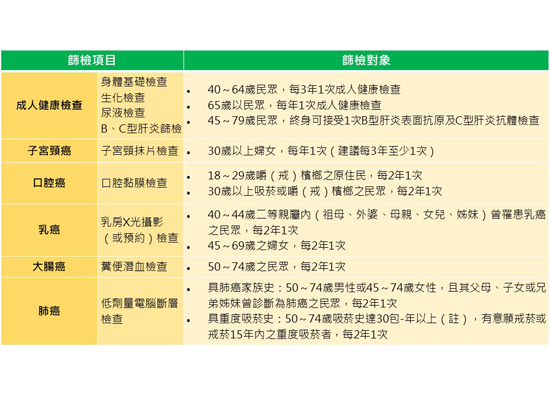04.2023 Life Guide
The Three Great Methods of Communication Effectively Enhance Children's Language Ability
Far Eastern Memorial Hospital Child Development Center / Lin Yachan Language Therapist


.jpg) Many parents are very concerned about their children's physical and mental development, among which language delay is one of the common problems in preschool children. This issue of 'Health Column' takes you through the language development process of children and how to improve their communication skills through practice.
Many parents are very concerned about their children's physical and mental development, among which language delay is one of the common problems in preschool children. This issue of 'Health Column' takes you through the language development process of children and how to improve their communication skills through practice..jpg) Babies begin to develop language communication skills from birth. At first, they make different sounds through their vocal organs. When they are six months old, they begin to develop understanding of words. When they are about one year old, they enter the "word period". They can say the first meaningful word, usually "father" or "mother". Parents are always surprised and pleased.
Babies begin to develop language communication skills from birth. At first, they make different sounds through their vocal organs. When they are six months old, they begin to develop understanding of words. When they are about one year old, they enter the "word period". They can say the first meaningful word, usually "father" or "mother". Parents are always surprised and pleased.As children continue to improve their understanding and vocabulary expression, they gradually become able to understand some simple instructions. A one and a half year old usually has a vocabulary of over 50 words, and can also combine two words to say phrases such as "mom hugging" and "dad holding"; After entering the "vocabulary explosion period", not only did my vocabulary rapidly increase, but also many sentences appeared. By the age of three, I was able to speak complex sentences and liked to ask questions, becoming a small communicator. 4、 A five year old child speaks very clearly, with few errors in pronunciation, and can describe things in complex long sentences, making it easy to converse with others.
Language development may seem natural, but it is actually quite complex and requires many conditions, including healthy physiological mechanisms (body structure, sensory function, brain function, etc.), cognitive processing ability, emotional ability, and appropriate language stimulation environment. Common causes of language delay include: insufficient intelligence, hearing loss, cerebral palsy, brain trauma, autism, attention deficit hyperactivity disorder, emotional disorders, etc; In addition, abuse and neglect are also factors that hinder development. In addition to the aforementioned language delays caused by physiological or sensory impairments, there are also many young children who only have language delays without any other problems, and the reasons are unknown.
When a child's language development does not keep up with its peers, parents cannot help but worry. It is recommended to take the child to the hospital for evaluation by a physician and language therapist, identify the cause, and discuss treatment goals and strategies together. In the process of language therapy, in addition to seeking medical attention, it is more important for parents to integrate the content and communication promotion skills taught by therapists into daily life situations, and practice them frequently to make their children's language skills more proficient and applied in real environments.
Family participation and home practice are key factors in promoting language development. Here are three main strategies to make communication with your child easier.
First move: Start interaction
The foundation of language communication is interaction, and the process must be enjoyable and enjoyable. Even adults do not like to communicate with others in stressful situations, and this is also true for children. So, how to interact with children?
1. Use information from "observation", "waiting", and "listening" as a springboard
Observation: Observe a child's interests, gameplay, and what does he want to tell you? What is he paying attention to?
Waiting ": Give children time to process the information they hear and the opportunity to actively communicate, rather than just responding passively.
Listening: Carefully listen to the child's communication content and provide appropriate responses. When you listen, your child will feel that their message is important to you and that you are interested, thereby building confidence in communication.
2. Imitate children and 'interpret' them
The simplest way to initiate interactive communication with children is to 'imitate'. Imitate children's voices, vocabulary, actions, and expressions, attract their attention, and even make them feel dominant, actively making different actions to lead us. When children begin to participate in interaction, we can teach them how to imitate adults, learn actions, gameplay, and language communication through imitation.
.jpg) The second move: Customized language ladder
The second move: Customized language ladderAdjust your speaking style and construct an appropriate level of language ladder, so that children can follow and climb up.
1. Adjustment principle: Try to simplify the language as much as possible, reduce the amount of speech (do not chatter), speak slowly and clearly, and make good use of various visual cues, such as actions, gestures, expressions, pictures, actual objects, etc., to help children understand what you are saying.
2. Add a little difficulty: After observing what the child wants to express, say the more difficult words and sentences as a response.
.jpg) 3. Hearing the correct pronunciation: When a child first learns to speak, if the pronunciation is incorrect, parents can repeat the correct pronunciation. For example, when a child points to a ball and says, 'One, one.' ˊ」 Parents should respond to the 'ball' and then engage in interaction. There is no need to tell children what is wrong or ask them how to say it correctly. Learning correct pronunciation takes some time, and it is important for young children to have successful vocal experience and be encouraged.
3. Hearing the correct pronunciation: When a child first learns to speak, if the pronunciation is incorrect, parents can repeat the correct pronunciation. For example, when a child points to a ball and says, 'One, one.' ˊ」 Parents should respond to the 'ball' and then engage in interaction. There is no need to tell children what is wrong or ask them how to say it correctly. Learning correct pronunciation takes some time, and it is important for young children to have successful vocal experience and be encouraged.4. Create communication opportunities: After starting the interaction, create an opportunity for the child to actively express themselves, then "add some difficulty" based on the content conveyed by the child, and finally continue the interaction. Here are a few tips:
(1) Visible but unable to touch: Place the toy the child wants to play with in a visible but unreachable place, or place the cookies they want to eat in a transparent jar that is not easy to open, waiting for the child to actively request assistance.
(2) Don't meet your needs all at once: Give your child only a small amount of favorite food or toys, such as a small cookie, a little milk, or a piece of puzzle, and wait for them to actively ask for more.
(3) Pause: Pause a child's favorite activity or music, such as when they are having fun playing tickle or bubble games, pause and look at them, and wait for the child to request to continue the game.
(4) Pretending to be 'broken': For example, deliberately pretending to have your ears' broken 'and not hearing the doorbell, waiting for the child to remind you.
(5) Do things that are not in line with common sense, such as pretending to put shoes on your hands and waiting for the child to correct them.
(6) Give less necessary things: for example, give a child a seal without attaching ink; Or Dim sum time to the cup, but no milk, waiting for their request.
Third move: ample practice opportunities
In daily life, there are many opportunities for interaction every day, including getting dressed, riding a bicycle, going to the park to play, and going to the supermarket to buy groceries together. These are all great opportunities for learning a language. Creating more opportunities for practice, allowing children to become proficient and use the language they have learned, will effectively enhance their communication skills.
#




















